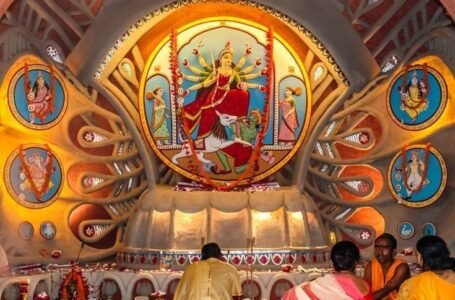The Sacred Serenity of Lakshman Temple in Nashik – A Journey Through Time, Myth, and Divine Craftsmanship

– Arushi Kastwar
In the sacred city of Nashik, on the tranquil banks of the Godavari River, lies a lesser-known but spiritually profound site — the Lakshman Temple. While Nashik’s Panchavati area is dotted with significant Ramayana-era landmarks, this temple stands out as a peaceful homage to Lakshman, the loyal brother of Lord Rama. According to ancient beliefs, this site marks where Lakshman drew the legendary “Lakshman Rekha” to protect Sita during their exile. It is also believed to be where he fought inner and outer demons — quite literally and metaphorically.
This temple is an ode to quiet strength. While Rama embodies kingly righteousness and Sita devotion, Lakshman represents discipline, loyalty, and sacrifice. His role in the Ramayana is one of deep silence, unwavering action, and often, unrecognized emotional turmoil. The temple captures this energy perfectly. Instead of grandeur, you’re welcomed by simplicity. No overwhelming crowds, no commercial clutter — just a calm, spiritual embrace.
Situated in close proximity to other major pilgrimage spots like Kalaram Temple and Sita Gufa, the Lakshman Temple remains delightfully off the radar for most tourists. But for those who do find their way here, it becomes a cherished discovery — a sacred detour into the quieter corners of mythology.
The Architecture, Atmosphere, and Timeless Appeal
Walking into the Lakshman Temple feels like stepping into a chapter of the Ramayana. The stone architecture is humble, with aged carvings and subtle motifs that have withstood centuries. The idol of Lakshman, bow in hand, radiates calm strength. The temple isn’t just a structure—it’s a story carved in stone and whispered into the wind by generations of priests, locals, and devotees.
The location near the Godavari Ghats adds to its charm. The early morning light reflects off the water and dances on the temple walls. The smell of burning incense, the soft ringing of bells, and the sound of temple chants create a deeply meditative ambiance. Whether you’re religious or just spiritually curious, this place invites you to slow down and reflect.
Locals will tell you tales about how Lakshman cut off Surpanakha’s nose nearby, an act that catalyzed the war in Lanka. The temple, thus, is not just a site of peace but also one of profound emotional energy. It represents the tension between duty and emotion, restraint and rage — aspects of Lakshman that resonate deeply with the human experience.
You won’t find elaborate pillars or towering gopurams here. But what you will find is sacred stillness. And in that stillness, a rare kind of beauty — the kind that doesn’t try too hard but stays with you long after you’ve left.
A Sacred Stop for Pilgrims, Storytellers, and Seekers
In an age of Instagram temples and crowd-filled religious tourism, the Lakshman Temple offers something different — something raw, intimate, and soulful. It’s perfect for solo travelers, mythology lovers, or anyone exploring the Ramayana trail in Maharashtra. If you’re a photographer or content creator, the temple’s golden-hour glow near the ghats makes for breathtaking visuals.
Many spiritual travelers combine it with a visit to Ramkund, Kalaram Temple, and Sita Gufa, creating a deeply immersive mythological loop through Nashik. The temple becomes more than a pitstop — it becomes a pause button for the soul.
There’s no ticket, no fancy museum, just faith and history interwoven like the threads of a sacred cloth. During festivals like Ram Navami and Diwali, the area lights up with diyas and bhajans, yet the temple retains its serene character. Locals still come in the early hours to sit, meditate, or just breathe.
Though modest in appearance and often overshadowed by more prominent temples, the Lakshman Temple in Nashik holds a quiet kind of power — one that speaks not through grandeur, but through depth. It is a place where myth merges with memory, where stone remembers story, and where silence feels sacred.
In a world full of distractions, the temple offers a rare kind of peace. It invites you to pause, to reflect on loyalty, sacrifice, and the many unsung acts of devotion that shape our spiritual heritage. Just as Lakshman stood at the edge of duty and desire, protecting what was dear with unwavering strength, this temple too stands — quietly, steadfastly — reminding us that faith isn’t always loud. Sometimes, it’s a soft boundary drawn in the soil, a quiet presence by your side, or a vow kept without applause.
Visiting this temple is not just a religious act, but a deeply emotional journey — one that reconnects you with ancient values and a timeless sense of devotion. Whether you’re a pilgrim or a seeker, you leave with something more than just memory — you leave with stillness in your heart and reverence in your breath. And that, perhaps, is the true blessing of Lakshman Temple.
Even if you’re not on a religious path, the Lakshman Temple welcomes you with its timeless truth — that loyalty doesn’t always roar; sometimes it stands silent and steady, like a temple that’s stood the test of time.


